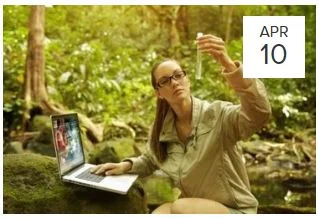Another STEM-tastic year of Homeschool Days is coming to a close! We are already prepping for the 2019-2020 school year (registration for the STEM Scholar Program is open!), but thought we’d take a moment to celebrate all we learned this past year.
We kicked off the 2018-2019 school year by exploring careers in chemistry during our September Homeschool Day. Students experimented with Oobleck, a non-Newtonian fluid, and played the Rainbow Chemistry game.
October’s focus was earth sciences, with special guest Paul Yura, a Warning Coordination Meteorologist with the National Weather Service Austin-San Antonio. Activities included studying the water cycle, making our own wind socks, and creating topographic maps.
We focused on technology trends in November. Special guest, Suzanne A. Pierce, founder of Pixel Profundo, told us about her augmented reality application. Students made 3D drawings and explored the environment with Creek Quest by Science Augmented.
December was all about inventors. Dan Patterson, the CEO of PMFocus, joined us to talk about how his lifelong curiosity and ingenuity led him to become a globally recognized entrepreneur. The building was filled with budding inventors, all creating one-of-a-kind marble runs, their own musical instruments, and even unique creatures.
In January, we kicked off the New Year with a focus on careers in mathematics. Our guest speaker was master jeweler, Susan Oliver Heard. She told us how a love of math and the arts made for a unique career path. Future mathematicians spent the day making cityscapes by graphing the numbers in Pi, discovering how the Pythagorean theorem can be used to create snail shells, and making their own Mobius strips.
Engineering was the name of the game in February. We learned about recording engineering from special guest, Justin Douglas, the owner of King Electric Recording. Activities included using Strawbees to make unique creations, launching pom poms with custom-designed launching systems, and engineering our own mountain rescue litters.
We kicked off our final three Homeschool Days of the year with a focus on careers in biology in March. The Science Mill’s own Bob Elde presented a discussion about understanding our brains better. Students made models of neurons, learned about side dominance in our bodies, and experimented with optical illusions by creating thaumatropes.
Environmental sciences were the focus in April. Corey Batson, the Executive Director of Urban Interface, brought a great horned owl and a peregrine falcon for a discussion about wildlife rehabilitation and environmental interpretation. Earth-focused activities, like traveling through the water cycle and learning about bird beaks, were on the schedule.
The 2018-19 school year is wrapping up with a focus on careers in Coding for May. Jennie Kam from Cisco will speak about cybersecurity, and Cisco employees will be on hand for a special game of Pitching Packets. The game demonstrates how networks function, and what kinds of things can make them better or slow them down. Students will also examine binary code (while making cool bracelets!), and program our robot, Botley.
The 2018-19 school year is wrapping up with a focus on careers in Coding for May. Jennie Kam from Cisco will speak about cybersecurity, and Cisco employees will be on hand for a special game of Pitching Packets. The game demonstrates how networks function, and what kinds of things can make them better or slow them down. Students will also examine binary code (while making cool bracelets!), and program our robot, Botley.
The Science Mill’s inaugural group of STEM Scholars graduates on May 9, too! Read more about this unique program, and register for 2019-2020 STEM Scholars now!















